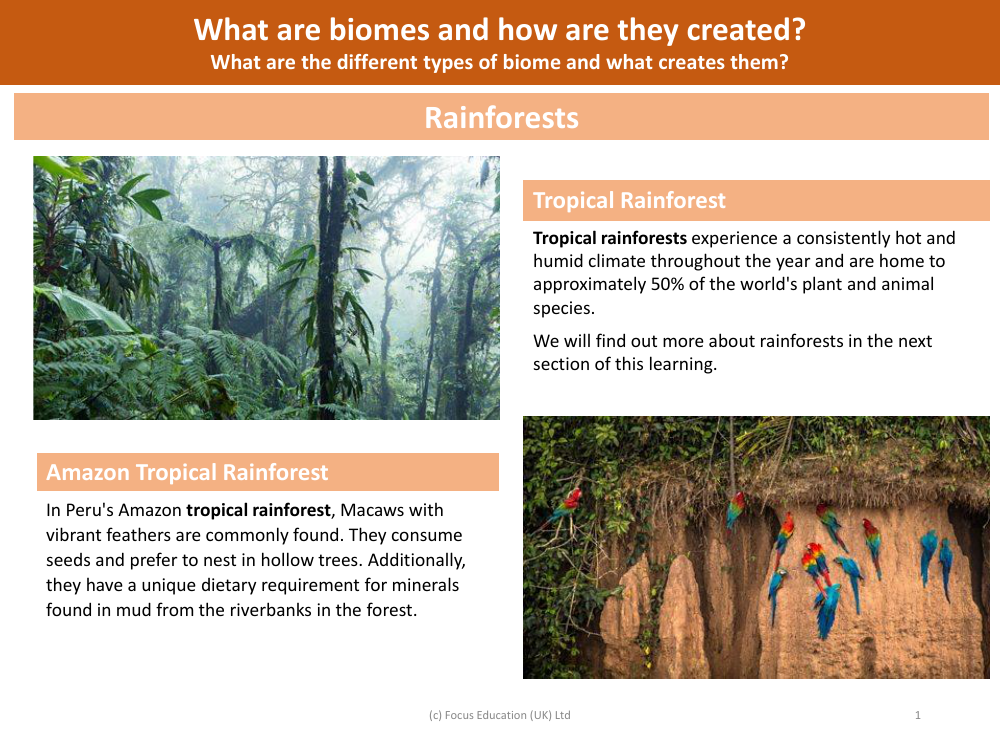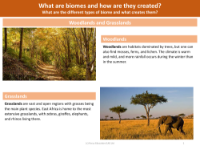Rainforest - Info sheet

Geography Resource Description
Tropical rainforests are characterised by their hot and humid conditions that persist year-round, creating an environment rich in biodiversity. These ecosystems are incredibly vital as they harbour around half of all plant and animal species found on Earth. The intricate balance of the tropical rainforest biome supports a vast array of life, with complex interactions between the flora and fauna. The importance of tropical rainforests extends beyond their biodiversity, as they play crucial roles in global weather patterns and carbon storage, which will be explored further in the subsequent section of this learning material.
In the Amazon Tropical Rainforest of Peru, one can witness the striking beauty of Macaws. These birds are renowned for their bright and colourful feathers, and they play an integral role in the rainforest's ecology. Macaws are seed eaters, often choosing to nest within the hollows of trees, which underscores the interdependence between wildlife and the forest habitat. A peculiar aspect of their diet is the need for specific minerals, which they obtain by ingesting mud from the riverbanks. This unique behaviour highlights the specialized adaptations that species have developed to thrive in the diverse and complex tropical rainforest biome.







